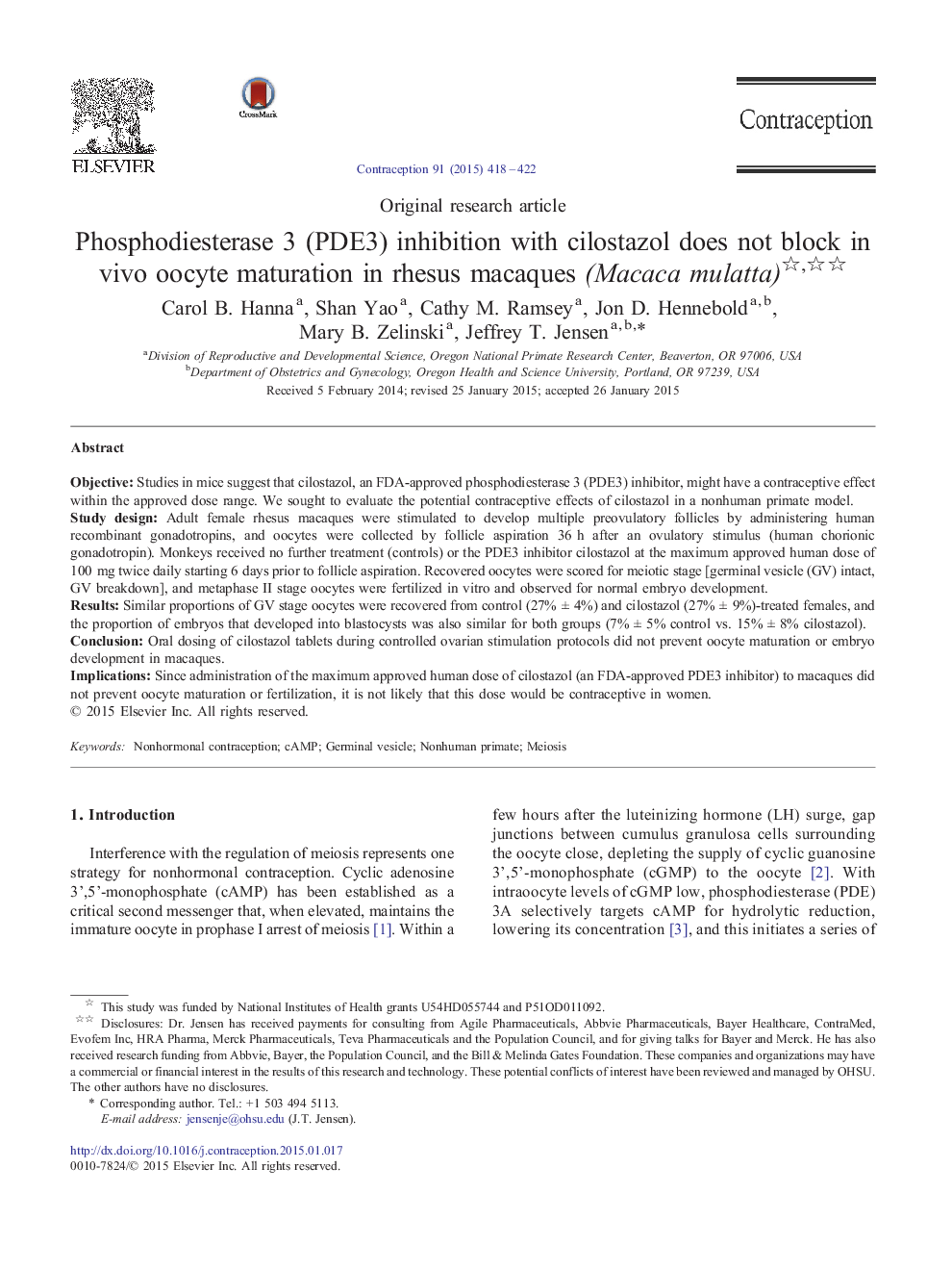| کد مقاله | کد نشریه | سال انتشار | مقاله انگلیسی | نسخه تمام متن |
|---|---|---|---|---|
| 3913259 | 1251432 | 2015 | 5 صفحه PDF | دانلود رایگان |

ObjectiveStudies in mice suggest that cilostazol, an FDA-approved phosphodiesterase 3 (PDE3) inhibitor, might have a contraceptive effect within the approved dose range. We sought to evaluate the potential contraceptive effects of cilostazol in a nonhuman primate model.Study designAdult female rhesus macaques were stimulated to develop multiple preovulatory follicles by administering human recombinant gonadotropins, and oocytes were collected by follicle aspiration 36 h after an ovulatory stimulus (human chorionic gonadotropin). Monkeys received no further treatment (controls) or the PDE3 inhibitor cilostazol at the maximum approved human dose of 100 mg twice daily starting 6 days prior to follicle aspiration. Recovered oocytes were scored for meiotic stage [germinal vesicle (GV) intact, GV breakdown], and metaphase II stage oocytes were fertilized in vitro and observed for normal embryo development.ResultsSimilar proportions of GV stage oocytes were recovered from control (27% ± 4%) and cilostazol (27% ± 9%)-treated females, and the proportion of embryos that developed into blastocysts was also similar for both groups (7% ± 5% control vs. 15% ± 8% cilostazol).ConclusionOral dosing of cilostazol tablets during controlled ovarian stimulation protocols did not prevent oocyte maturation or embryo development in macaques.ImplicationsSince administration of the maximum approved human dose of cilostazol (an FDA-approved PDE3 inhibitor) to macaques did not prevent oocyte maturation or fertilization, it is not likely that this dose would be contraceptive in women.
Journal: Contraception - Volume 91, Issue 5, May 2015, Pages 418–422